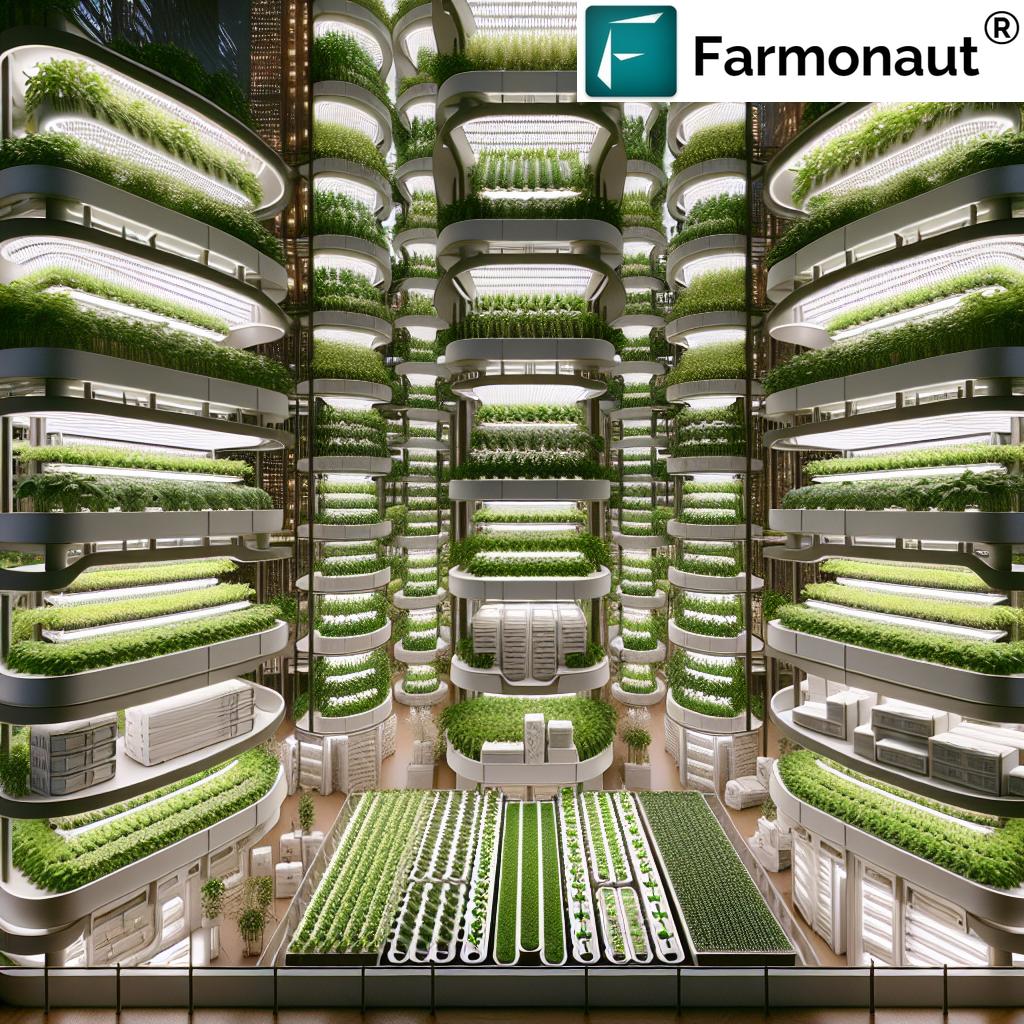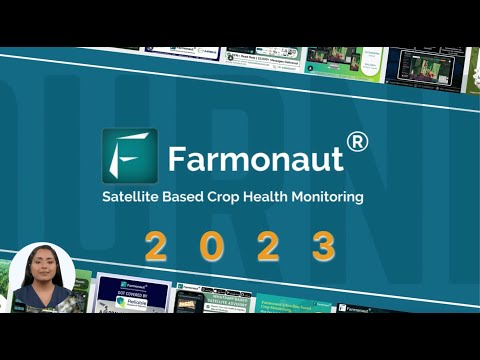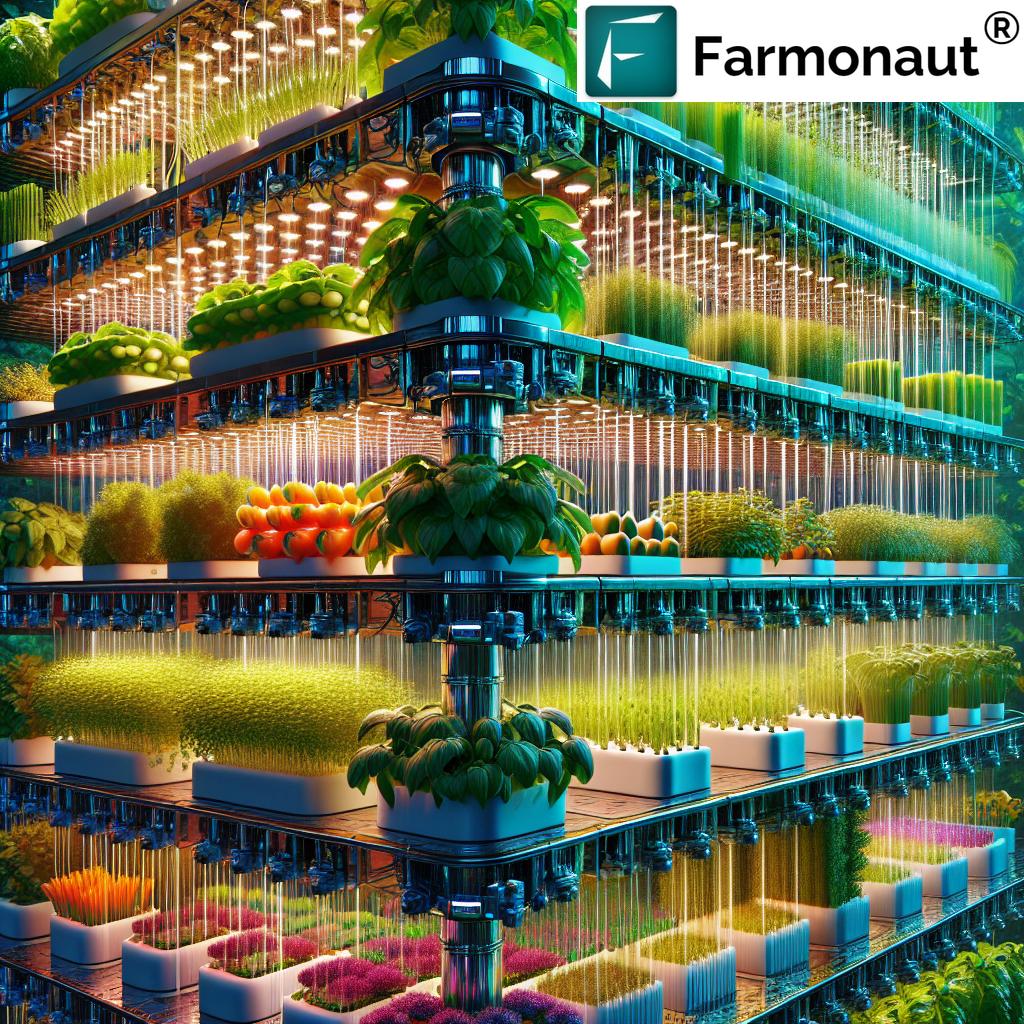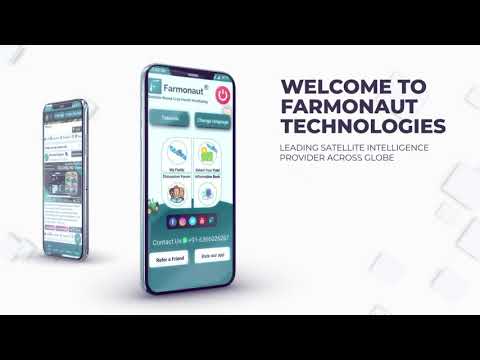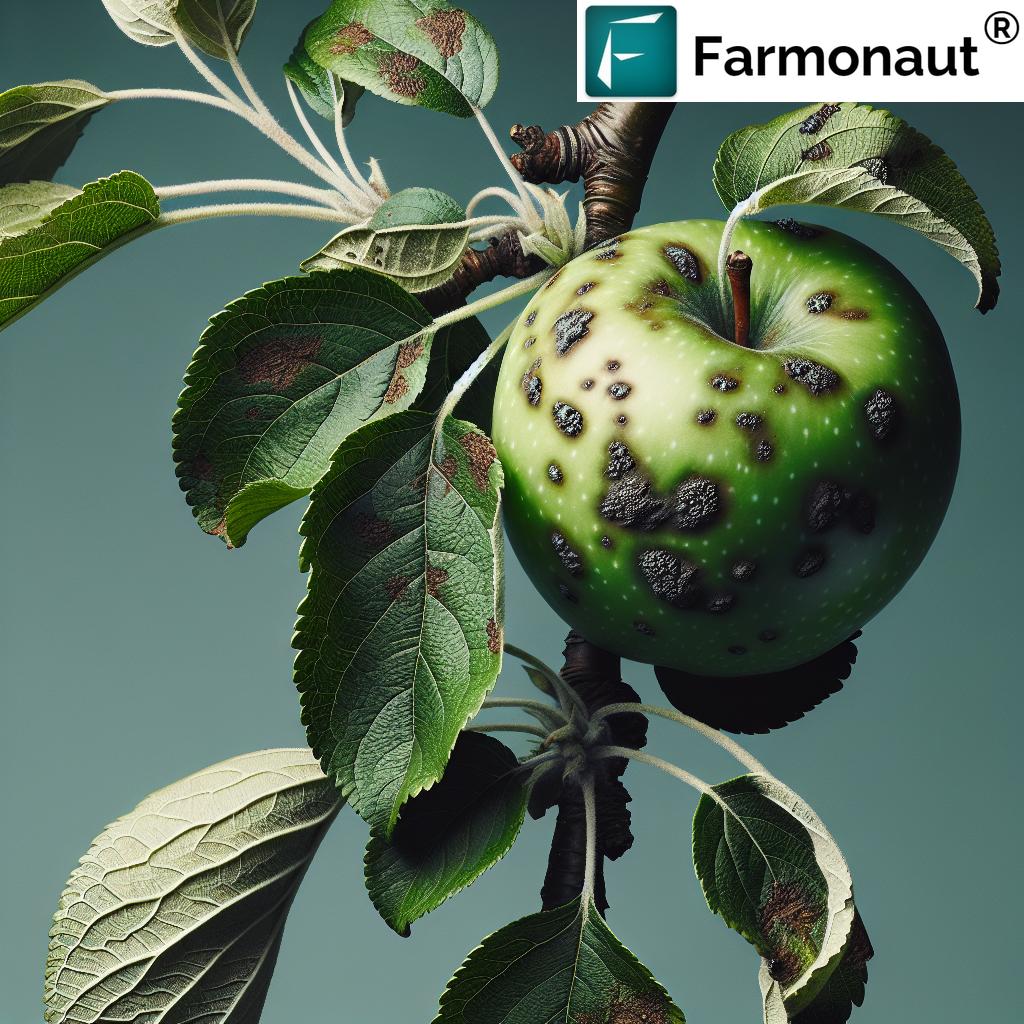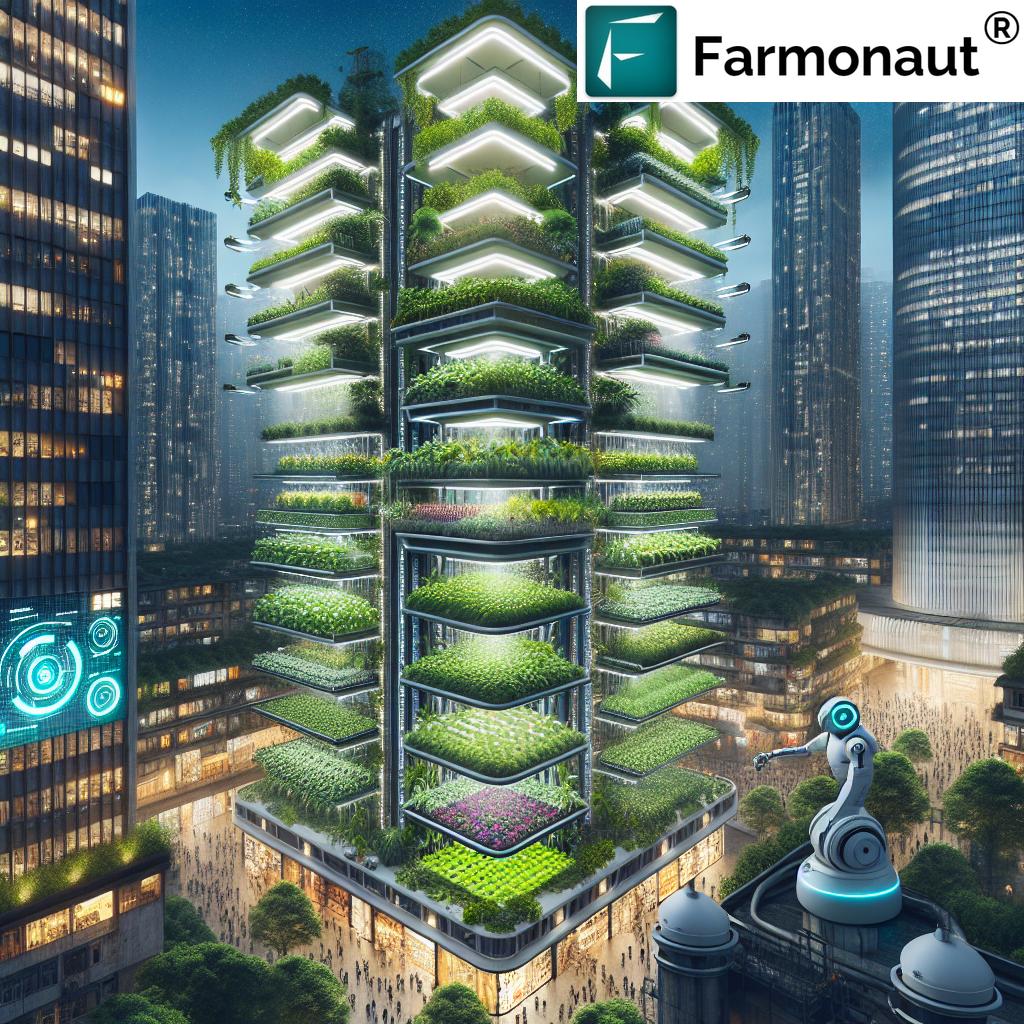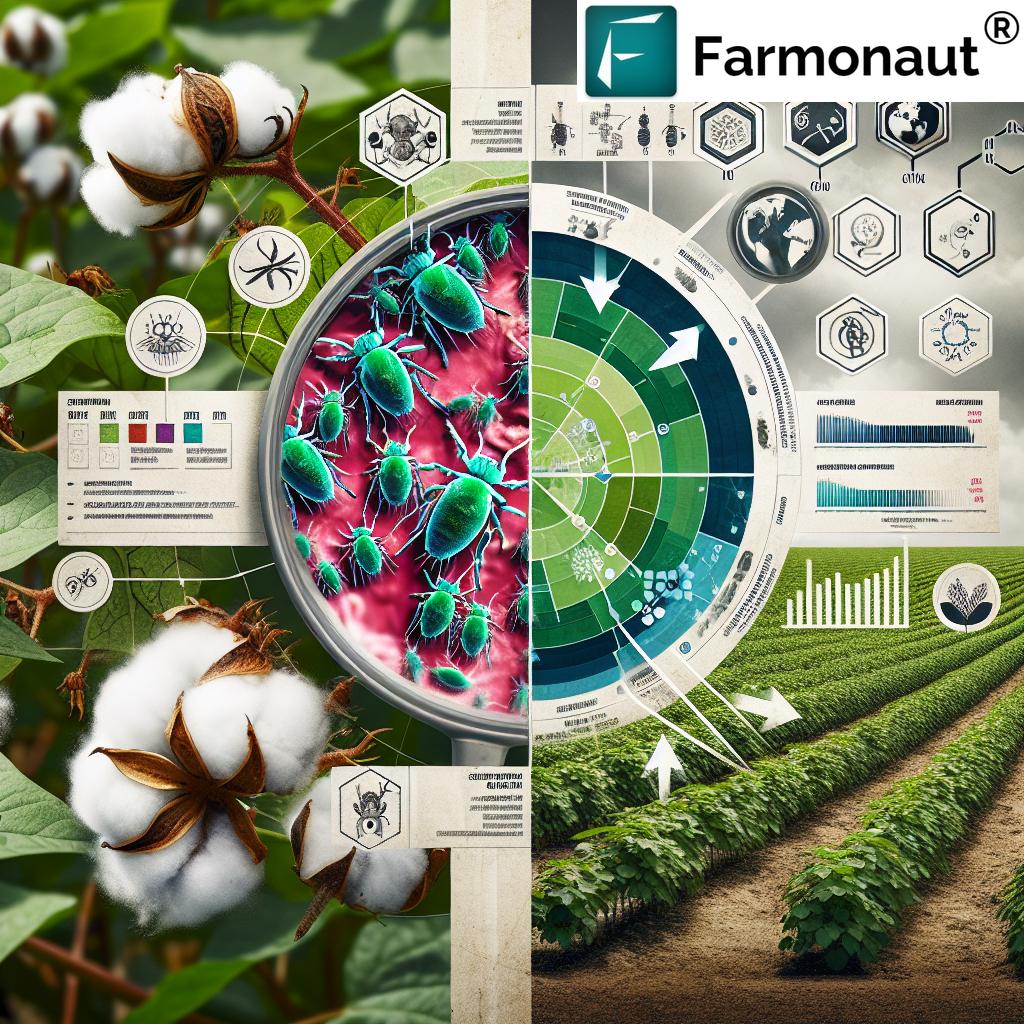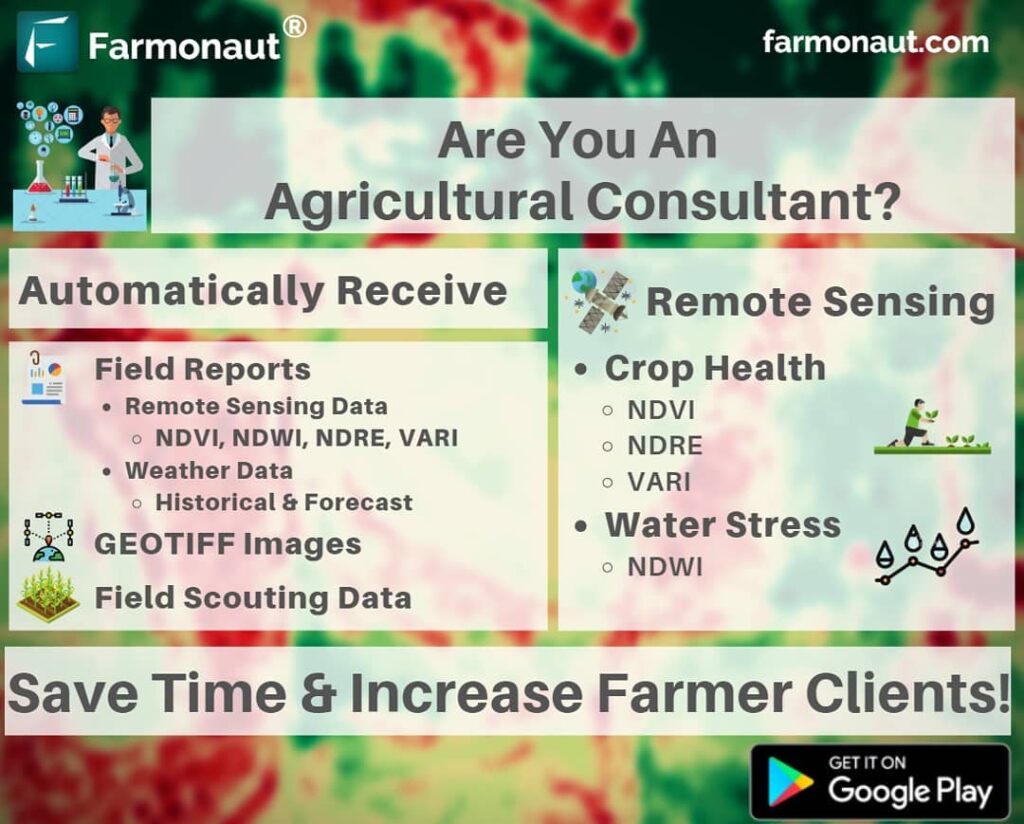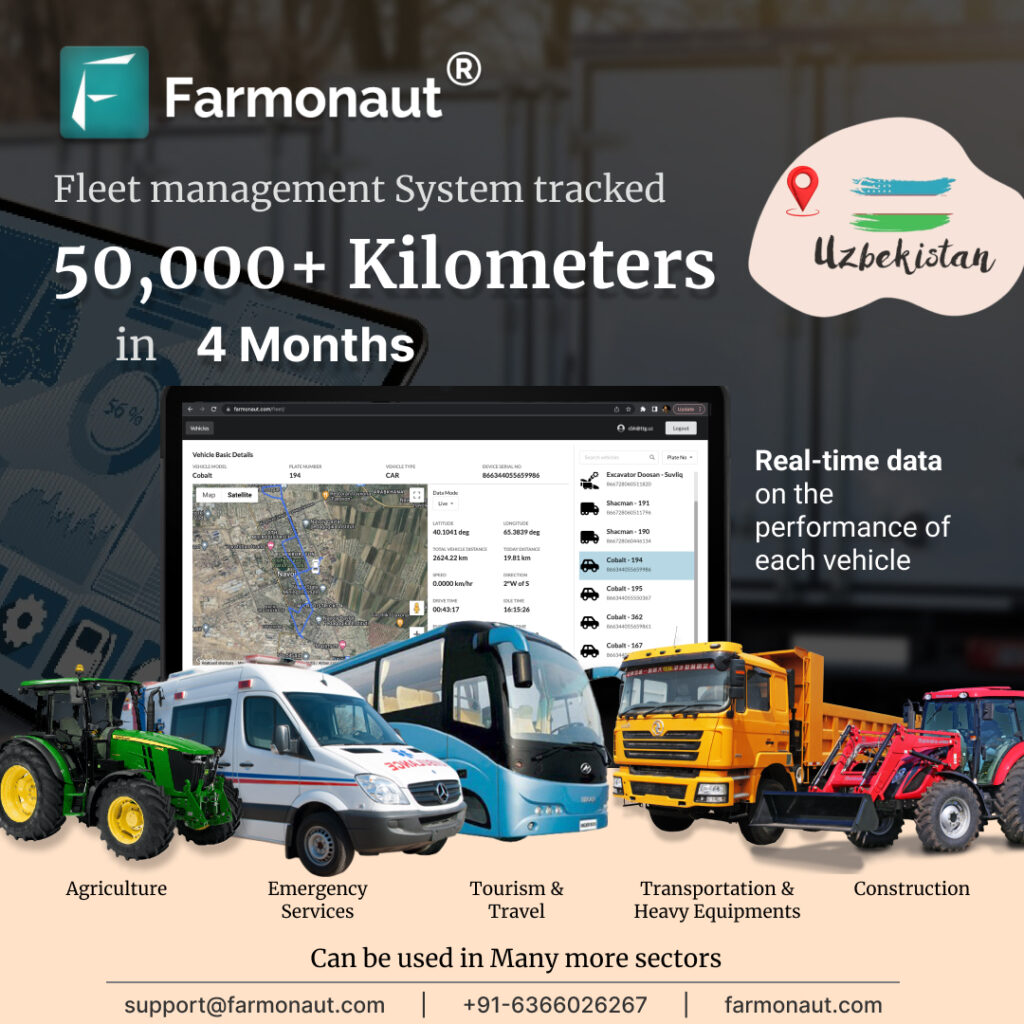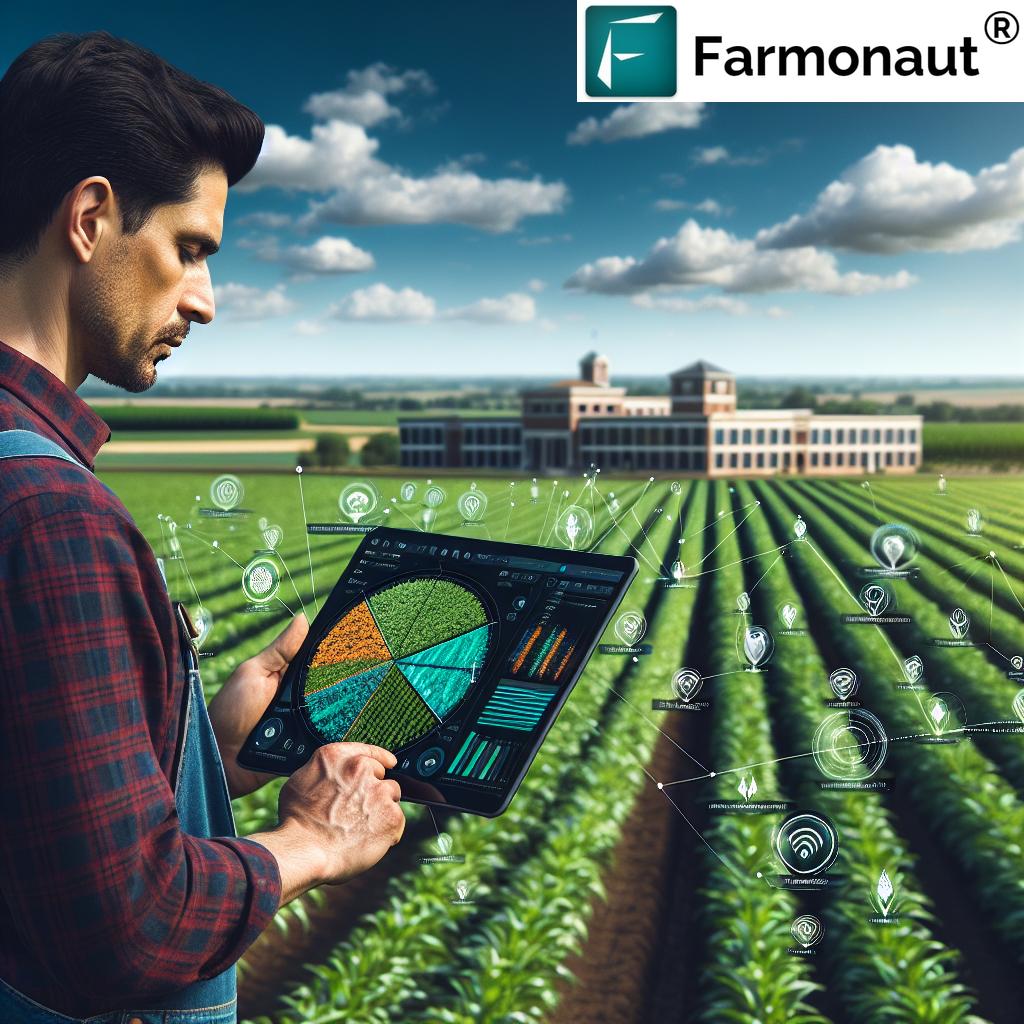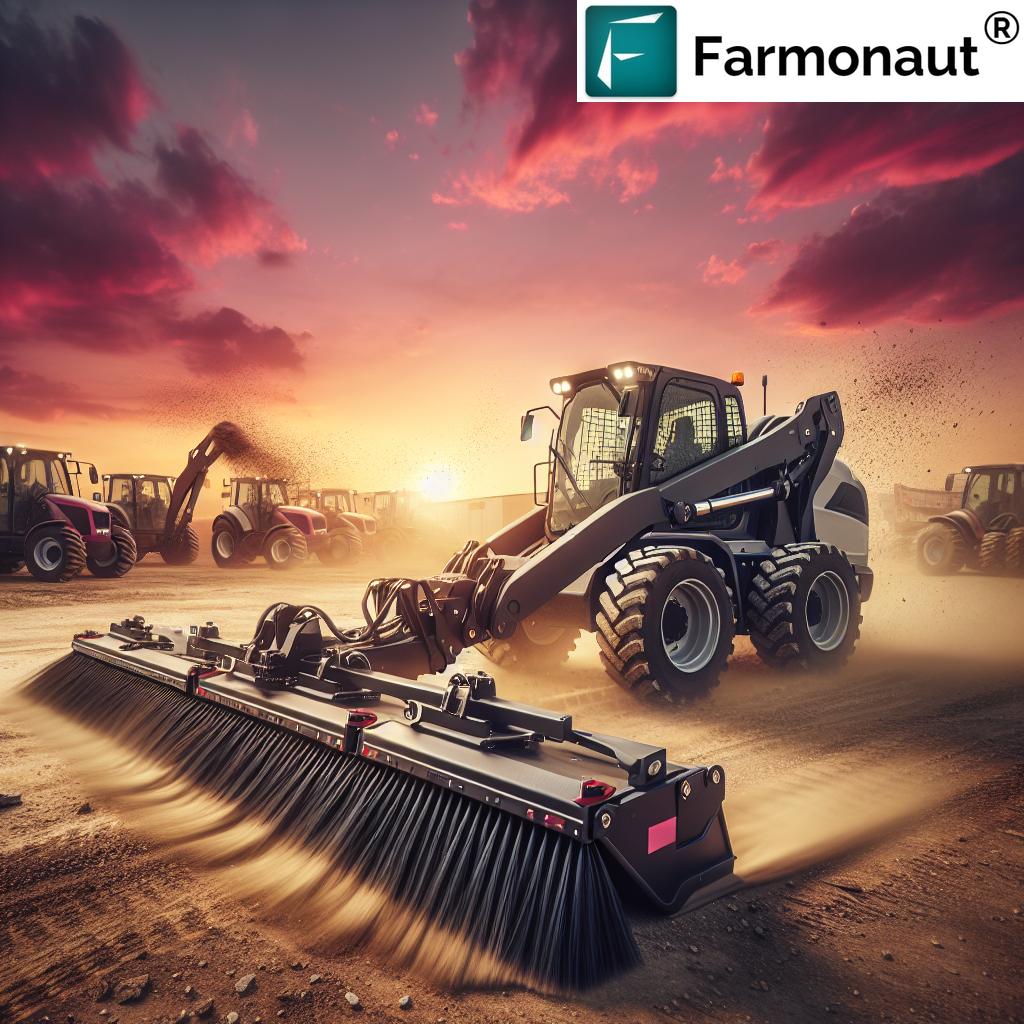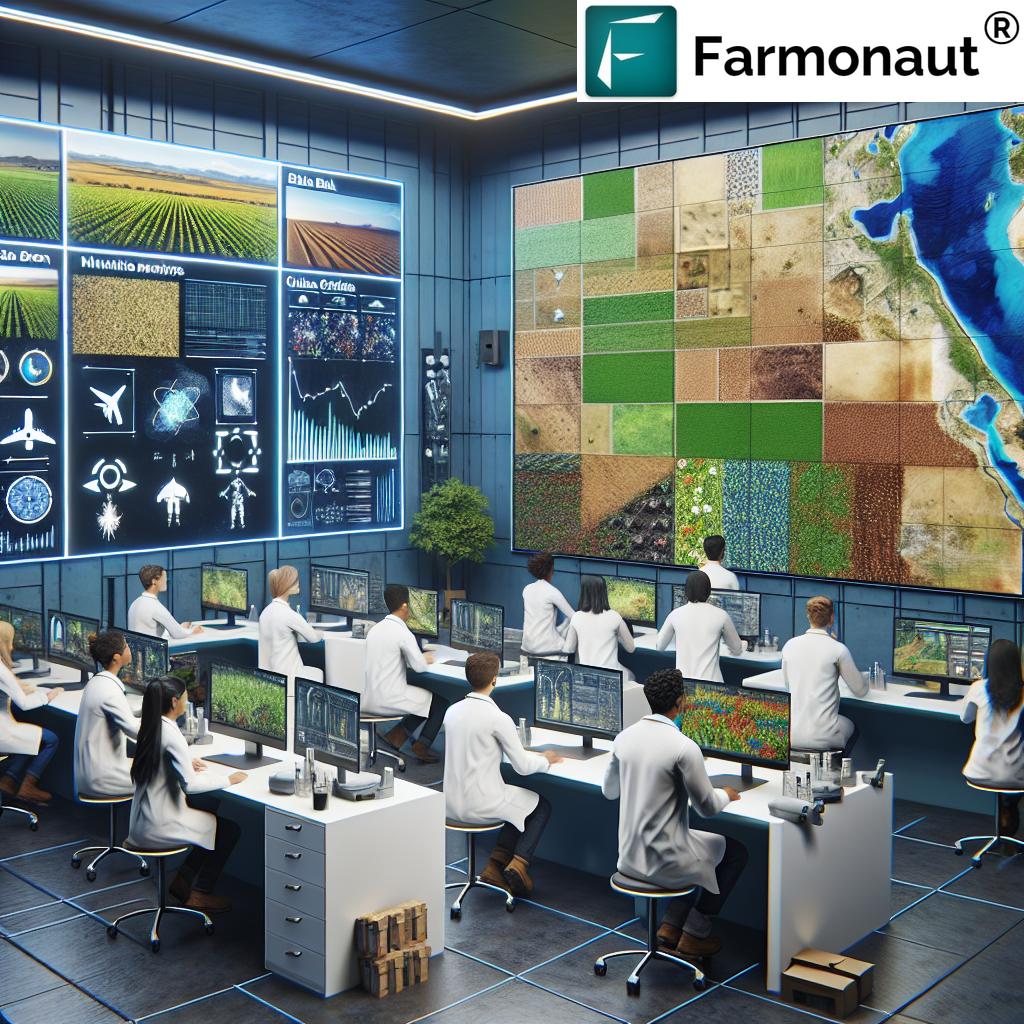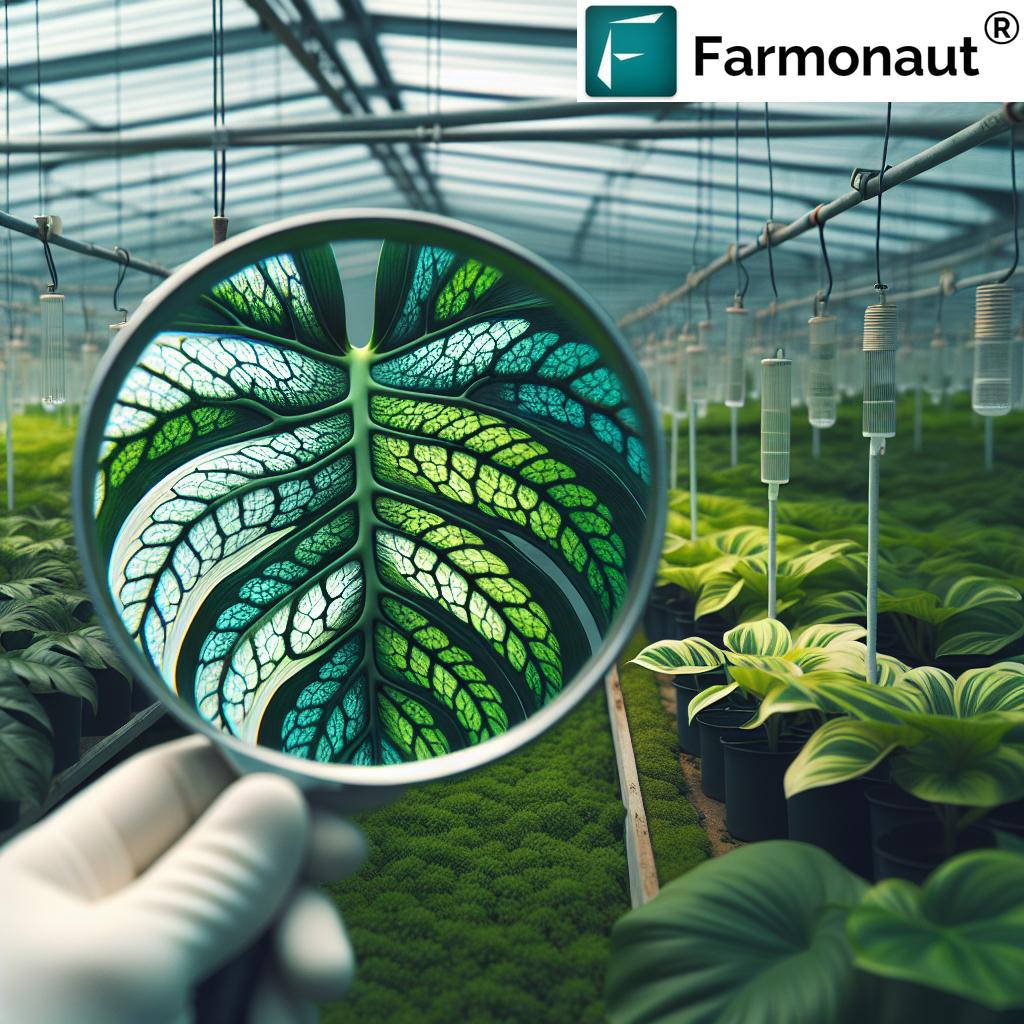Vertical Farming Systems: 7 Urban Hacks You Must See
Table of Contents
- Introduction: The Rise of Vertical Farming Systems
- Historical Context and Evolution of Vertical Farming
- Core Technologies Powering Urban Vertical Farming Systems
- Vertical Farming Systems: 7 Urban Hacks You Must See
- Comparison Table of Urban Vertical Farming Technologies
- Advantages & Benefits of Vertical Farming Systems
- Challenges and Considerations in VFS
- Applications in Forestry and Seedling Production
- Environmental Impact and Sustainability
- Future Prospects and the Role of Smart Data (Farmonaut)
- Farmonaut’s Advanced Precision Agriculture Tools
- Frequently Asked Questions About Vertical Farming Systems
- Conclusion
“Vertical farming can yield up to 10 times more crops per square meter than traditional farming methods.”
Introduction: The Rise of Vertical Farming Systems
Urban centers across the globe are at a pivotal moment—how can we feed rapidly expanding populations while addressing land scarcity, climate change, and resource limitations? Vertical farming systems (VFS) present a transformative approach. By enabling crop cultivation in vertically stacked layers within controlled environments, these systems leverage advanced technologies to optimize space, conserve resources, and produce fresh food closer to urban centers. This method confronts critical challenges such as land and water scarcity, environmental impact, and food security.
In this comprehensive guide, we explore the evolution, technologies, urban hacks, and future prospects of vertical farming. Plus, discover how Farmonaut’s satellite-powered solutions support smarter, more sustainable urban agriculture.
Historical Context and Evolution of Vertical Farming
The concept of vertical farming has evolved significantly over the past decades, moving from theoretical models to practical applications in today’s urban agriculture. Early ideas were focused on integrating agriculture with architecture—envisioning skyscrapers as eco-friendly “farms” embedded directly into city landscapes. These concepts aimed at reducing transportation costs and minimizing the environmental impact associated with food logistics.
With advancements in hydroponics and aeroponics during the late 20th and early 21st centuries, the movement gained traction. Experimental setups in academic research gradually transitioned into viable commercial vertical farming operations, especially as LED lighting for agriculture became energy efficient and affordable enough for mainstream adoption. Today, vertical farming represents a modern agricultural solution—anchored in controlled environment agriculture and powered by advanced crop cultivation technologies.
As cities worldwide continue to urbanize at a rapid pace, we see vertical farming moving from the fringes to the center stage in sustainable food production.
Core Technologies Powering Urban Vertical Farming Systems
At the heart of every high-performing vertical farming system is a powerful suite of interrelated technologies. These core innovations optimize growing conditions and significantly reduce resource usage compared to conventional farming:
-
Hydroponics and Aeroponics:
- Hydroponics delivers nutrients directly to plant roots through circulating nutrient-rich water solutions.
- Aeroponics suspends roots in air, delivering mist containing nutrients—enhancing growth, conserving water, and minimizing soil-borne diseases.
-
LED Lighting for Agriculture:
LED systems provide tailored light spectra to support photosynthesis, regardless of external weather conditions. Modern LEDs are energy efficient and flexible, allowing year-round crop production. -
Climate Control Systems:
Automated controls allow us to regulate temperature, humidity, and CO₂ levels within vertical farms, ensuring stable conditions and minimizing disease risk. -
Automation and Robotics:
- Robotics and smart sensors handle planting, monitoring, harvesting, and troubleshooting. Automated systems allow for precision, reduce labor costs, and ensure consistent product quality.
As these integrated technologies become more sophisticated, they push the boundaries of resource efficiency for urban agriculture solutions.
“LED lighting in vertical farms reduces energy use by up to 40% compared to conventional greenhouse lighting.”
Vertical Farming Systems: 7 Urban Hacks You Must See
1. Multi-Tiered Hydroponic Racks for Urban Space Optimization
Maximizing yield per square meter is a defining feature of vertical farming. By stacking cultivation layers in custom-engineered racks, we can produce up to 10 times more crops using the same footprint as traditional farms.
- Specialized racks allow us to grow leafy greens, herbs, and even compact fruits indoors.
- This method leverages the vertical dimension, making it ideal for urban centers with premium land costs.
- Modular designs allow scalability, letting us expand as production or market demand grows.
2. Automated Climate and Lighting Control for Consistent Crop Quality
Consistency is king in urban agriculture solutions—whether for local grocers or high-end restaurants. Using advanced sensors and AI-driven analytics, we monitor and adjust all growth parameters (light intensity, photoperiod, temperature, humidity, CO₂ enrichment) so plants have optimal conditions throughout their lifecycle.
- Automated climate management reduces human error and increases efficiency.
- LED lighting for agriculture ensures optimal photosynthesis and growth—year-round, regardless of external weather.
3. Precision Fertigation with Hydroponics and Aeroponics
Fried with maximizing resource conservation, precision fertigation enables us to deliver nutrients and water directly to plant roots.
- Hydroponics: Recirculating systems reduce water usage by up to 98% over soil-based agriculture.
- Aeroponics: Uses misted nutrients for even greater efficiency, minimizing waste and contamination.
- Automation ensures exact dosing, reducing fertilizer costs and improving crop quality.
4. Robotic Planting, Tracking, and Harvesting
Robotics are streamlining the future of agriculture. In high-tech vertical farms, robotic arms, conveyor belts, and AI-based vision systems are increasing precision while minimizing labor input.
- Robots monitor plant health, recognize pests/disease early, and harvest crops at peak maturity.
- Automated workflows maintain a consistent supply and product quality—all at lower operational costs.
5. Resource Efficient Farming Methods: Closed-Loop Water Systems
Water is a premium resource for any urban agriculture solution. VFS use closed-loop irrigation to capture, filter, and recirculate water.
- Modern systems can cut water usage by more than 90% over conventional farming methods.
- This method minimizes wastewater and reduces environmental contamination.
- Automated sensors detect leaks or inefficiencies immediately, maximizing resource conservation.
6. Blockchain-Based Supply Chain for Urban Food Security
Ensuring transparency from vertical farms to consumers is essential for trust and food safety.
- Blockchain technology enables us to trace every step—from seed sourcing to harvest to grocery delivery.
- This minimizes fraud, ensures product authenticity, and enhances regulatory compliance.
- Browse Farmonaut’s Product Traceability Solution for food authentication and secure supply chains in urban agriculture.
7. Smart Data Integration for Predictive Farm Management
Integrating AI-driven analytics and satellite-based monitoring positions us to respond rapidly to any changes in crop health, water stress, or resource usage.
- Smart platforms like Farmonaut leverage multi-layer satellite data, enabling precise interventions.
- This ensures consistent yields, optimal resource use, and reliable urban food production.
- For large-scale, precision-oriented, and even government-driven farm management projects, view Farmonaut Large Scale Farm Management Solutions.
Comparison Table of Urban Vertical Farming Systems and Technologies
To help visualize the innovations shaping urban agriculture solutions, here’s a comparative table of leading vertical farming systems:
| System/Technology Name | Estimated Energy Efficiency (%) | Water Usage Reduction (%) | Space Utilization Factor | Initial Setup Cost (USD, est.) | Suitable Crops | Urban Application Type |
|---|---|---|---|---|---|---|
| Hydroponic Vertical Stacks | 65–75% | Up to 95% | High (Stacked 5–10x) | $80–$250/sq. ft | Leafy greens, herbs, strawberries | Indoor, modular |
| Aeroponic Towers | 70–80% | Up to 98% | Very High (Vertical Tower) | $100–$350/sq. ft | Herbs, lettuces, tomatoes | Indoor, rooftop, modular |
| Aquaponics | 55–65% | Up to 90% | Medium | $150–$400/sq. ft | Leafy greens, fish | Indoor, rooftop |
| Smart Climate Control Greenhouses | 60–75% | 70–80% | High | $90–$200/sq. ft | Tomatoes, cucumbers, peppers | Rooftop, attached urban greenhouses |
| Modular Sensor Networks | Varies (dependent on paired tech) | Varies | Enhances all systems | $5,000–$30,000 per farm | All crops for monitoring purposes | Integration with all urban setups |
Advantages & Benefits of Vertical Farming Systems
Space and Resource Efficiency
-
Space Efficiency:
Utilizing vertically stacked layers, VFS maximize yield per unit area—a crucial feature for urban farming. -
Resource Conservation:
Advanced soilless methods such as hydroponics and aeroponics can reduce water usage by up to 98%. Closed-loop systems also recycle nutrients and minimize waste.
Consistent, High-Quality Food Production
-
Stable Yields:
Year-round production, independent of climate fluctuations, helps to ensure a reliable food supply. -
Cleaner Produce:
Reduced need for pesticides/herbicides in controlled environments leads to fresher, safer produce.
Environmental and Urban Benefits
-
Proximity to Consumers:
By producing food in or near urban centers, VFS reduce transportation emissions and supply chain length, delivering fresher produce to consumers. -
Land Preservation:
Efficient use of vertical and indoor spaces helps reduce deforestation and ecological damage often caused by agricultural expansion. -
Economic Potential:
While the initial investment can be high, optimized operations lead to job creation, skill development, and market expansion in urban food sectors.
Traceability and Supply Chain Security
With blockchain and digital traceability, VFS can offer transparent supply chains, helping institutions and consumers verify the origin and quality of fresh produce.
Farmonaut’s Traceability can be integrated into both large and small vertical farming operations for enhanced trust and compliance.
Challenges and Considerations in Vertical Farming Systems
Vertical farming systems bring powerful advantages, but we must also address certain challenges to fully unlock their potential:
-
High Energy Demands:
Operating artificial LED lighting, climate control, and robotics requires significant energy.
Solution: Integrate renewable sources (solar, wind) and continually advance energy-efficient vertical farms. Optimize schedules with smart data to minimize waste. -
Economic Viability:
High initial setup costs and technology investments can be barriers. Achieving profitability needs careful business planning, reliable markets, and technology scaling. -
Technological Complexity:
VFS relies on advanced automation and sensors, demanding skilled personnel for management, troubleshooting, and maintenance. -
Resource Management:
Even with resource efficient farming methods, improper or unoptimized use can lead to overconsumption or breakdowns.
To address these, Farmonaut offers cutting-edge satellite-based crop health monitoring, real-time weather analytics, and AI-powered recommendations. These tools help us optimize energy and water use, reduce unnecessary costs, and maintain a profitable, sustainable operation.
Interested in monitoring your carbon footprint for urban agriculture? Explore Farmonaut’s Carbon Footprinting Solutions—helping you comply with environmental regulations and improve sustainability.
Applications in Forestry and Seedling Production
Beyond traditional tomatoes and herbs, vertical farming systems are also transforming forestry—especially in seedling production for commercial and ecological reforestation:
-
Accelerated Growth:
In controlled environments, tree seedlings can reach 20–40 cm in just three months—compared to 18–24 months in conventional nurseries. -
Improved Biosecurity:
Isolation from outdoor threats minimizes disease risk and increases survival rates upon planting. -
Consistent Quality:
Uniform growth conditions ensure seedlings grow at similar rates, delivering predictable results for reforestation and commercial forestry projects. - Integration: Smart tracking, monitoring (via satellite/AIs), and nutrient control make modern forestry applications more predictable and less vulnerable.
Managing a plantation or forestry operation? Explore Farmonaut’s Crop, Plantation & Forest Advisory services for scalable, smart precision agriculture solutions.
Environmental Impact and Sustainability of Vertical Farming
Vertical farming systems are at the forefront of sustainable food production in dense urban environments. These are some of the major environmental benefits:
- Land Preservation: Produces more food on a smaller footprint, reducing the demand for agricultural land and preventing deforestation.
- Water Efficiency: Closed-loop irrigation systems conserve water and address scarcity in drought-prone regions.
- Reduced Chemical Runoff: No soil, fewer agrochemicals, and tighter ecosystem control mean less pollution and contamination of surrounding land and water bodies.
- Lower Transportation Impact: By growing where the consumers are, VFSs reduce supply chain emissions and reliance on long-haul logistics.
- Energy Use & Mitigation: While energy consumption is higher for lighting and climate, integrating renewable sources and optimizing schedules can reduce environmental impact.
For business and policy leaders, measuring and reporting sustainability metrics is key.
Farmonaut’s Carbon Footprinting tool (carbon footprint tracking) offers real-time environmental monitoring and compliance support for vertical and traditional farms alike.
Future Prospects: Next-Generation Urban Agriculture Solutions
As we look ahead, the trajectory for vertical farming systems is bright and getting brighter:
- AI Integration: Artificial intelligence will further enhance predictive analytics, resource allocation, pest monitoring, and automated management.
- Automation and Robotics: Continued evolution of robotics—from seeding to harvesting—will make VFS even more efficient, scalable, and less labor-dependent.
- Wider Crop Variety: Improved LED and sensor tech will see more “difficult” crops—like dwarf fruit trees, medicinal plants, or specialty herbs—grown in vertical formats.
- Integration with Urban Infrastructure: Look for more vertical farms embedded in mixed-use skyscrapers, retrofitted warehouses, and even rooftop installations as urban planning gets more innovative.
- Data-Driven Farms: Services like Farmonaut’s satellite monitoring, AI-based advisories, and blockchain product traceability will be essential for compliance, optimization, and transparency.
As the global population climbs and cities expand, VFS will be an anchor of future-proof, resilient, sustainable food production.
Farmonaut: Empowering Vertical Farming & Urban Agriculture with Advanced Tech
Farmonaut is a global pioneer in agricultural technology, offering a suite of satellite-based and AI-driven management solutions for vertical, urban, and precision agriculture.
-
Crop Health Monitoring:
Monitor crop health, moisture, and growth stages from space—enabling targeted interventions for urban farming systems and large-scale operations alike. -
AI-based Farm Advisory (Jeevn AI):
Get real-time weather, growth recommendations, and crop management insights directly to your dashboard or smartphone—boosting efficiency and minimizing resource wastage. -
Blockchain Traceability:
For urban agriculture and CEA-focused businesses, Farmonaut’s blockchain solution (Traceability) verifies every link in the produce journey, enhancing trust and reducing fraud. -
Fleet & Resource Management:
Manage vehicles, machinery, and labor workflows with Farmonaut Fleet Management—perfect for urban distribution and logistics or diverse peri-urban operations. -
Carbon Footprinting:
Real-time carbon tracking for small, medium, and enterprise-level operations. Achieve eco-certifications and report transparently with Farmonaut’s Carbon Footprint Tool. -
Crop Loan and Insurance:
Secure crop loans or agricultural insurance with rapid satellite-based verification, reducing fraud and ensuring more predictable, accessible financing options. See Crop Loan & Insurance for details.
Accessible for All:
Farmonaut’s affordable subscription packages are available for smallholder farmers, cooperatives, government agencies, and large agribusinesses. Experience affordable, scalable precision agriculture: Start Now.
API for Developers:
Integrate Farmonaut’s satellite and weather data into your own urban, vertical, or controlled environment applications.
– Farmonaut API
– Developer Documentation
All services are available via web app, Android/iOS, or API.
Frequently Asked Questions About Vertical Farming Systems
What is a vertical farming system?
A vertical farming system is a method of growing crops in vertically stacked layers inside controlled, indoor environments. This method leverages technologies such as hydroponics, aeroponics, LED lighting, and smart sensors to maximize space, reduce resource usage, and enable food production independent of climate or location.
What are the main benefits of vertical farming in urban centers?
Vertical farming in cities reduces land use, conserves water, ensures fresh produce proximity to consumers, minimizes transportation and emissions, and reduces dependence on seasonal cycles.
Is vertical farming more sustainable than conventional agriculture?
Yes. Vertical farming systems can use up to 98% less water, drastically reduce land usage, and often require fewer or no chemical pesticides due to indoor, controlled conditions. However, managing energy consumption and sourcing power from renewable energy remains a key sustainability consideration.
Which technologies are essential for a commercial vertical farming operation?
Core technologies include hydroponics/aeroponics systems, LED lighting for agriculture, advanced automation for planting and harvesting, environmental sensors, and data-driven advisory platforms such as those provided by Farmonaut.
What types of crops work best in vertical farms?
Leafy greens (lettuce, spinach, kale), herbs (basil, mint), microgreens, strawberries, and some tomatoes are among the most successful. Research is underway to expand crop variety via advanced crop cultivation and customized lighting solutions.
How does Farmonaut’s technology complement vertical farming?
Farmonaut provides satellite and AI-powered insights that enable farmers to monitor crop health, predict irrigation and input needs, track resource consumption, manage traceability, and comply with environmental standards. These tools support smarter, more efficient, and sustainable vertical and urban agricultural operations.
Conclusion: Vertical Farming Systems & The Urban Food Revolution
Vertical farming systems represent a leap forward in agricultural innovation—enabling us to produce food closer to where it’s consumed, with lower resource usage and reduced environmental impact. The adoption of controlled environment agriculture, advanced crop cultivation technologies, and integrated data solutions positions cities to become centers of efficient, resilient food production.
Challenges remain: building truly energy efficient vertical farms, balancing costs, and supporting operators with the right skills. Still, the benefits—optimized land use, year-round production, proximity, traceability, and the promise of sustainability—are simply too great to ignore.
By integrating tools like Farmonaut—with its powerful satellite analytics, AI advisories, and blockchain traceability—we all can help shape the future of urban food security and sustainable growth. As urbanization accelerates and climate pressures mount, let’s embrace innovation, empower our growers, and ensure that tomorrow’s cities are as green and bountiful as the countryside was before.
Get started with Farmonaut’s platform for smarter, data-driven urban and vertical agriculture—explore the app now!





